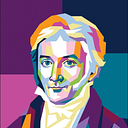Gaussian Splatting: Papers #1
Here are the latest papers related to Gaussian Splatting! 🤘
Hash3D: Training-free Acceleration for 3D Generation
Hash3D: Training-free Acceleration for 3D Generation [PDF]
by Xingyi Yang, Xinchao Wang
2024–04–09
The evolution of 3D generative modeling has been notably propelled by the adoption of 2D diffusion models. Despite this progress, the cumbersome optimization process per se presents a critical hurdle to efficiency. In this paper, we introduce Hash3D, a universal acceleration for 3D generation without model training.
Central to Hash3D is the insight that feature-map redundancy is prevalent in images rendered from camera positions and diffusion time-steps in close proximity. By effectively hashing and reusing these feature maps across neighboring timesteps and camera angles, Hash3D substantially prevents redundant calculations, thus accelerating the diffusion model’s inference in 3D generation tasks.
We achieve this through an adaptive grid-based hashing. Surprisingly, this feature-sharing mechanism not only speed up the generation but also enhances the smoothness and view consistency of the synthesized 3D objects.
Our experiments covering 5 text-to-3D and 3 image-to-3D models, demonstrate Hash3D’s versatility to speed up optimization, enhancing efficiency by 1.3 to 4 times. Additionally, Hash3D’s integration with 3D Gaussian splatting largely speeds up 3D model creation, reducing text-to-3D processing to about 10 minutes and image-to-3D conversion to roughly 30 seconds.
The project page is at https://adamdad.github.io/hash3D/
Revising Densification in Gaussian Splatting
Revising Densification in Gaussian Splatting [PDF]
by Samuel Rota Bulò, Lorenzo Porzi, Peter Kontschieder
2024–04–09
In this paper, we address the limitations of Adaptive Density Control (ADC) in 3D Gaussian Splatting (3DGS), a scene representation method achieving high-quality, photorealistic results for novel view synthesis.
ADC has been introduced for automatic 3D point primitive management, controlling densification and pruning, however, with certain limitations in the densification logic.
Our main contribution is a more principled, pixel-error driven formulation for density control in 3DGS, leveraging an auxiliary, per-pixel error function as the criterion for densification.
We further introduce a mechanism to control the total number of primitives generated per scene and correct a bias in the current opacity handling strategy of ADC during cloning operations.
Our approach leads to consistent quality improvements across a variety of benchmark scenes, without sacrificing the method’s efficiency.
Gaussian Pancakes: Geometrically-Regularized 3D Gaussian Splatting for Realistic Endoscopic Reconstruction
Gaussian Pancakes: Geometrically-Regularized 3D Gaussian Splatting for Realistic Endoscopic Reconstruction [PDF]
by Sierra Bonilla, Shuai Zhang, Dimitrios Psychogyios, Danail Stoyanov, Francisco Vasconcelos, Sophia Bano
2024–04–09
Within colorectal cancer diagnostics, conventional colonoscopy techniques face critical limitations, including a limited field of view and a lack of depth information, which can impede the detection of precancerous lesions.
Current methods struggle to provide comprehensive and accurate 3D reconstructions of the colonic surface which can help minimize the missing regions and reinspection for pre-cancerous polyps.
Addressing this, we introduce ‘Gaussian Pancakes’, a method that leverages 3D Gaussian Splatting (3D GS) combined with a Recurrent Neural Network-based Simultaneous Localization and Mapping (RNNSLAM) system.
By introducing geometric and depth regularization into the 3D GS framework, our approach ensures more accurate alignment of Gaussians with the colon surface, resulting in smoother 3D reconstructions with novel viewing of detailed textures and structures.
Evaluations across three diverse datasets show that Gaussian Pancakes enhances novel view synthesis quality, surpassing current leading methods with a 18% boost in PSNR and a 16% improvement in SSIM.
It also delivers over 100X faster rendering and more than 10X shorter training times, making it a practical tool for real-time applications. Hence, this holds promise for achieving clinical translation for better detection and diagnosis of colorectal cancer.
3D Geometry-aware Deformable Gaussian Splatting for Dynamic View Synthesis
3D Geometry-aware Deformable Gaussian Splatting for Dynamic View Synthesis [PDF]
by Zhicheng Lu, Xiang Guo, Le Hui, Tianrui Chen, Min Yang, Xiao Tang, Feng Zhu, Yuchao Dai
2024–04–09
In this paper, we propose a 3D geometry-aware deformable Gaussian Splatting method for dynamic view synthesis.
Existing neural radiance fields (NeRF) based solutions learn the deformation in an implicit manner, which cannot incorporate 3D scene geometry. Therefore, the learned deformation is not necessarily geometrically coherent, which results in unsatisfactory dynamic view synthesis and 3D dynamic reconstruction.
Recently, 3D Gaussian Splatting provides a new representation of the 3D scene, building upon which the 3D geometry could be exploited in learning the complex 3D deformation.
Specifically, the scenes are represented as a collection of 3D Gaussian, where each 3D Gaussian is optimized to move and rotate over time to model the deformation.
To enforce the 3D scene geometry constraint during deformation, we explicitly extract 3D geometry features and integrate them in learning the 3D deformation. In this way, our solution achieves 3D geometry-aware deformation modeling, which enables improved dynamic view synthesis and 3D dynamic reconstruction.
Extensive experimental results on both synthetic and real datasets prove the superiority of our solution, which achieves new state-of-the-art performance.
The project is available at https://npucvr.github.io/GaGS/
###
Thank you to arXiv for use of its open access interoperability. Thanks AtomikLabs for your support!
